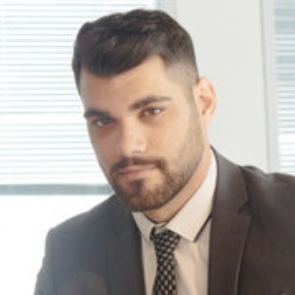The symbiotic relationship between Fintech and DDoS security is critical due to several fundamental reasons. First, Fintech firms navigate a heavily regulated environment, where security breaches can result in severe legal and financial repercussions. Second, these companies harbor sensitive personal and financial data, making them prime targets for cybercriminals seeking to exploit identities and assets. Third, cybersecurity breaches severely impact customer trust, tarnishing the reputation of Fintech companies and undermining their business models.
It is important to remember that in many cases, especially in the Fintech industry, DDoS attacks often serve as a deceptive “smoke screen” for other malicious cyber activities, posing an independent threat in their own right. Therefore, cybersecurity regulations, personal records, and retaining public reputation are the most critical reasons for having the best DDoS security possible, for any Fintech company.
What are the Main DDoS Challenges in Fintech?
Despite the importance of DDoS security in Fintech, organizations confront various problems in establishing and maintaining effective DDoS security measures.
- Rapid Innovation
Fintech’s rapid pace of technological evolution presents a challenge in keeping up with the latest cyber risks and defenses. The constant innovation and evolution create an environment where security postures evolve swiftly, leading to potential misconfigurations in deployed DDoS protections, thus heightening vulnerabilities.
- Regulatory Compliance
Adhering to highly regulatory standards diverts resources and time away from DDoS security, causing a strain on Fintech companies. Compliance measures such as performing red team tests often fall short of covering the entirety of the DDoS attack surface, as they typically cover less than 1% of the online services posture and do not provide full visibility and insights into the full DDoS vulnerability gap.
- Third-Party Risks
Fintech firms heavily rely on third-party vendors for critical services, exposing them to additional cybersecurity concerns. These external providers may become targets for DDoS threat actors, potentially resulting in data breaches or other security vulnerabilities.
Crunching the Numbers
It’s no accident that DDoS threat actors are more interested in Fintech companies than ever before. Recent studies illustrate the significant targeting of the financial sector, marking a substantial increase in attacks within the Europe, Middle East, and Africa (EMEA) region.
Notably, there has been a 40% surge in DDoS attacks comparing 2022 to 2023 in the EMEA region. Cyprus remains one of the most frequently attacked countries in Europe, underlining the necessity for cloud-compatible automated DDoS protection due to its concentration of financial companies and Forex brokers. Moreover, the cryptocurrency industry in the Asia Pacific continues to face relentless DDoS attacks in 2023.
Why Are DDoS Attackers Interested in Fintech Companies?
- Ongoing Accessibility
Fintech companies’ round-the-clock services, often accessible via mobile platforms, make them prime targets for DDoS attackers seeking to disrupt operations and damage reputations. Downtime resulting from a successful attack can swiftly lead to negative publicity, which is challenging to rectify. A successful DDoS attack will quickly lead to downtime, and a tarnished reputation can be hard to repair after the fact.
- Constant Vulnerability
Frequent technological updates in the Fintech sector amplify DDoS risks, requiring constant reconfiguration of protections. Attackers exploit these vulnerabilities during transitional periods, capitalizing on misconfigurations for successful attacks. Misconfigurations in the DDoS protections deployed remain the leading reason for successful and damaging DDoS attacks.
- Data Protection and Ransom Incentives
Fintech companies house significant amounts of sensitive data, attracting DDoS attackers aiming to disrupt operations and potentially demand ransom. The reputational damage following such an attack may pressure companies into considering ransom demands, adding to the complexity of these incidents. As a DDoS attack that shuts down operations may be a smoke screen for another malicious cyberattack, a Fintech company might end up paying the ransom demand that sometimes accompanies a DDoS attack.
Several reports indicated that companies who paid a ransom ended up suffering more attacks, with higher demands; paying the ransom doesn’t mean the threat is gone – on the contrary. We’ve witnessed many cases in which the attackers came back for more.
- Heightened Competition
Rising competition in the Fintech sector, especially within the cryptocurrency market, intensifies the risk of DDoS attacks launched by rival companies seeking to disrupt competitors’ operations. Services like DDoS-for-hire further enhance this risk, making it easier to orchestrate attacks against rivals, causing severe damages to the victims.
How Can Fintech Companies Protect Against DDoS Attacks?
A single hour of downtime costs can sometimes cost companies from $1 million to over $5 million per hour, with the added legal fines, fees, or penalties. This, in addition to increased (after the fact) DDoS security investments combined with cyber insurance premium increase. Therefore, DDoS victims sometimes end up paying for ransomware. But this is not a solution. It doesn’t guarantee that there won’t be another DDoS attack.
For Fintech companies to have complete DDoS resilience, they must take proactive steps. No matter which protection services are deployed, Fintech companies are highly exposed to DDoS attacks and the only way to remain DDoS resilient is to adopt non-disruptive DDoS testing and gain continuous and complete visibility into the DDoS security posture.
Fintech companies and their DDoS protection vendors must perform continuous DDoS testing on live environments to uncover vulnerabilities, prioritize remediation, and validate that the fixes were performed correctly. The old way of protecting online services against DDoS attacks does not work; It is time to adopt a new approach from reactive to pre-emptive to stay ahead of the threat curve.







